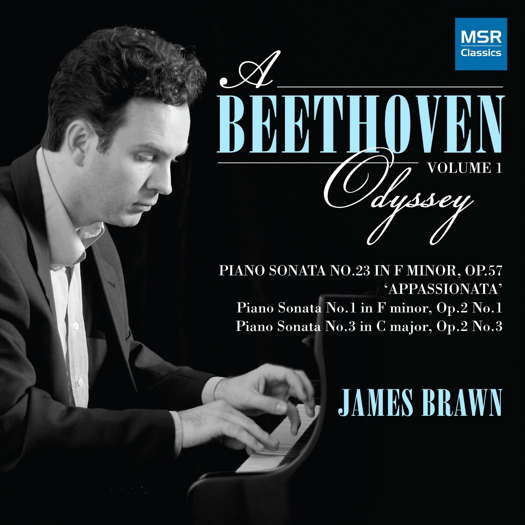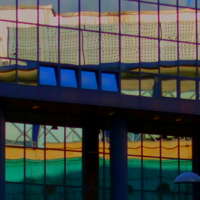 CENTRAL ENGLAND: Mike Wheeler's concert reviews from Nottingham and Derbyshire feature high profile artists on the UK circuit - often quite early on their tours.
CENTRAL ENGLAND: Mike Wheeler's concert reviews from Nottingham and Derbyshire feature high profile artists on the UK circuit - often quite early on their tours.
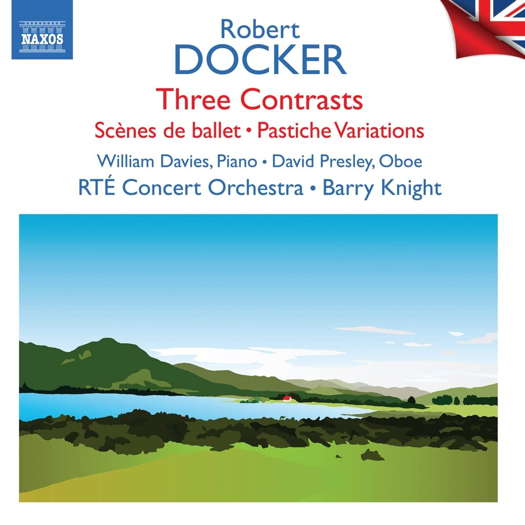
Very Infectious
GERALD FENECH listens to several recent recordings of British music
'Another stylish re-issue in a series that is experiencing a highly deserved renaissance.'
Robert Docker was one of the finest musicians in the field of popular light music. He was certainly one of its primary champions as a performer, both in the UK and latterly Australia. His compositions, including those featured on this recording, have become standards in the light music genre, but perhaps it is for his arrangements that he was best known and loved by audiences and broadcast producers alike. He wrote works of considerable stature for piano and orchestra and for the combined forces of orchestra with solo singers and chorus, and selections from the greatest hit shows from stage and screen. He also wrote and orchestrated music for cinema, including part of the score for Chariots of Fire.
Docker was born in London on 5 June 1918, the son of a gas worker. He was educated first at North Paddington Central School, during which time he also received some private musical tuition. He arrived at the Royal Academy of Music with a scholarship from the London County Council, and very soon he was making important strides in his learning to play the viola (with James Lockyer), organ, harpsichord and violin, but it was his skill at the piano that largely determined the successful career that lay ahead of him. Docker worked with many famous names, among which one finds the Scottish soprano Moira Anderson, Cynthia Glover and the American singer Lorna Dallas. He also had fond memories of accompanying José Carreras at the tenor's first popular concert at the Royal Albert Hall in 1985. A large number of appearances in the last twenty years of his life were for the BBC in the long-running series Friday Night is Music Night, where for many years he worked with and orchestrated for Sidney Torch. In performances for two pianos he formed a partnership with Edward Rubach which lasted fifteen years. Docker died on 9 May 1992 aged seventy-three.
Legend is one of Docker's best-known original works. It represents that particular strand of light music of the concerto-like feature for piano and orchestra, happily ranking alongside such pieces as Hubert Bath's Cornish Rhapsody and Richard Adinsell's Warsaw Concerto.
Scene du bal is a classic of the golden era of light music. The divided strings after the opening are typical of the genre and style, and it uses a standard light orchestra set-up with the clarinets featuring prominently in a repeat of the middle melody.
Three Contrasts for oboe and strings is really a collection of separate pieces played in a concerto-like configuration. They were written over a period of five years and dedicated to the oboist Linden Harris. The work is full of contrasting melodies that alternate between a sprightly 'Alla Marcia', a haunting and tender 'Romanza' and a jovial 'Rondolet'. The piece soon became part of the oboe repertoire and was one of Docker's favourites.
Listen — Robert Docker: Rondolet (Three Contrasts)
(8.574322 track 5, 2:32-3:24) ℗ 2000 Naxos Rights US Inc :
Tabarinage was written in June 1961 and became a firm favourite with players and audiences. It is written in the form of a can-can and is outrageously cheeky without being vulgar. Indeed, it was played at Docker's funeral in May 1992 at the family's request.
Scenes de ballet was published in 1958, but it is not clear whether these pieces were ever used to accompany dance. Still, they form a short suite suggestive of classical ballet music.
Air for Strings from Air and Jig for violin, cello and piano dates from 1958. This movement is marked 'Andante espressivo' and exploits the full range of the string tone. The simple tune is cast and interwoven in the pastoral mode of an English country summer scene, and uses the strings to paint a picture rich in peaceful solitude.
Prepared for a celebration of St David's Day in March 1972, The Spirit of Cambria is not an original composition, but an arrangement of four well-known traditional Welsh tunes. It is a fine example of Docker's skill at creating an original-sounding work using traditional airs.
Fancy Dance Reel is another arrangement dating from 1958. The Irish reel is again representative of the style of writing at a time when this kind of music was played regularly in teahouses, restaurants, hotels and even on radio.
Blue Ribbons is also an arrangement in the form of variations on the traditional air 'Oh dear, what can the matter be?' Docker makes much of the orchestral colour and weight within the arrangement. A violin solo in the slow middle section brings necessary relief in the development of what is a very short tune. In this first commercial release of the work one finds a prime example of the composer's skills at orchestral instrumentation.
Pastiche Variations for piano and orchestra was completed in March 1980, and this piece is also given a first commercial recording. Considered to be Docker's most serious work, it is, however, not without some fine musical humour hidden in the ninety-four pages of the score. The variations are based on the traditional French tune 'Frere Jacques' and are unusual in that they begin with the first variation before stating the theme. The 'pastiche' element of the title refers to the fact that each variation assumes the style of a different composer who was of help in Docker's career. Indeed, on the front page of the score the composer wrote thus: 'Dedicated with gratitude to all the composers who helped in writing these variations.' It is with good reason that Docker was extremely fond of this work.
Listen — Robert Docker: Pastiche Variations
(8.574322 track 15, 0:00-0:57) ℗ 2000 Naxos Rights US Inc :
This programme was recorded way back in March 1995 by the Marco Polo Label, so this re-issue is not only timely but most welcome, if only for the reason of giving one not yet acquainted with Docker's music the chance to enjoy a programme brimming with attractive melodies, deft orchestration, colourful expressivity and, above all, light-hearted moods, which nowadays is a rare commodity indeed. Another commendable reissue (Volume 7) in Naxos's ongoing cycle of British Light Music in still very clear sound and with a wonderful informative essay by the conductor Barry Knight, whose flawless and vibrant performances make of the music a real experience of joy and, very often, even fun. Life can be beautiful after all.
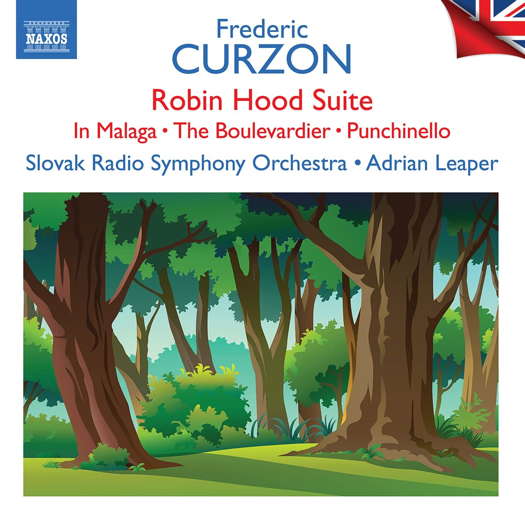
I can certainly subscribe to the suggestion that the marked degree of modesty shown by Frederic Curzon in respect of his own abilities and musicianship amounted to almost diffidence. Perhaps an innocence of the true value of one's abilities and skills, in any field of creative art, is an essential ingredient in the production of excellence.
In one brief paragraph, Donald Curzon seems to have summed up the essential character of his stepfather, Frederic Curzon, one of the least known and most underestimated of all major British composers of light music. Much liked and greatly respected by fellow musicians during his lifetime, little was known about him, even by his closest friends.
Born on 4 September 1899 in London, the young Frederic received a private education. Musical talent manifested itself at an early age and he surprised and delighted his teachers by showing promising ability on no less than four instruments - violin, cello, piano and organ. When only twelve he produced a setting of the Magnificat and Nunc dimittis, and by the age of sixteen he was already playing the piano in a London theatre orchestra. By the time he was twenty he had his own orchestra and he was also writing music to accompany silent films. But it was as an organist that he finally decided to devote his energies, and for some twenty years he travelled across all of Britain playing in countless halls, theatres and auditoriums. Also, over the years his compositional activity increased and more ambitious sound picture scores, especially music for documentaries, started to widen his repertoire. He also began to write in other genres and with the help of Sir Dan Godfrey, who was instrumental in programming many of Curzon's works, the composer not only had the satisfaction of seeing his works performed, but was given the opportunity to conduct his own compositions.
In spite of all this success, Curzon still remained reticent about his natural musical talents, and was undecided whether to take the plunge as a full-time composer. All this changed in late 1937 when he married Gladys Marian Fowler, who instilled in her husband the faith that he needed to exploit his gifts. From then on he devoted his life entirely to composition without abandoning the organ altogether. He was undoubtedly extraordinarily prolific, although composition did not always come easy to him. And yet, he found time to serve as President of the Light Music Society and, for some years, was head of Boosey and Hawkes' Light Music Department.
He eventually went to live by the sea in Bournemouth, the town that had truly embraced his compositions in the early years, and it was there that he died on 6 December 1973, aged seventy-four. An obituary by Bassett Silver who, oddly enough, died four months after Curzon, summed up the composer thus:
His gift for pure melody was very exceptional, and his orchestral scoring, always fresh and effective, never showed signs of striving to be original. He was a classic among English light music composers.
This Naxos re-issue of a Marco Polo 1991 recording (Volume 6 in the present series) is a prime example of Curzon's inexhaustible flow of melodic beauty. From the compilation of this programme I am inclined to believe that Curzon had a soft spot for Spain. Indeed, four of the pieces are directly connected with this country. The Malaga Suite, Capricante (Spanish Caprice), La Peineta (Spanish Serenade) and Bravada (Paso doble) are full of exciting rhythms, colourful orchestration and, at times, a certain Mediterranean elegance that help the music to ebb and flow like a subtle breeze.
Listen — Frederic Curzon: Bravada (Paso doble)
(8.555172 track 17, 0:00-0:59) ℗ 1992 Naxos Rights US Inc :
Dance of the Ostracised Imp is, maybe, Curzon's best-known work. Not surprising really, as its catchy scherzando tempo makes it very infectious.
Listen — Frederic Curzon: Dance of the Ostracised Imp
(8.555172 track 6, 0:00-1:00) ℗ 1992 Naxos Rights US Inc :
The Galavant has charm written all over it, while the exquisite Punchinello sparkles with a youthful energy that invites one's feet to start tapping. A beguiling Simonetta Serenade and a raucous Robin Hood Suite are among the other pieces on this issue, which also includes four other delightful works in the form of Cascade Waltz, Saltarello, Pasquinade and The Boulevardier, an evocative quartet that simply enchants.
Adrian Leaper and the Czecho-Slovak Radio Symphony Orchestra (Bratislava) glide through the music with a charming elan that is full of wit and sparkle. The Spanish pieces are particularly engaging, with some vibrant playing brimming with rhythmic exuberance and dazzling colour. Another stylish re-issue in a series that is experiencing a highly deserved renaissance.
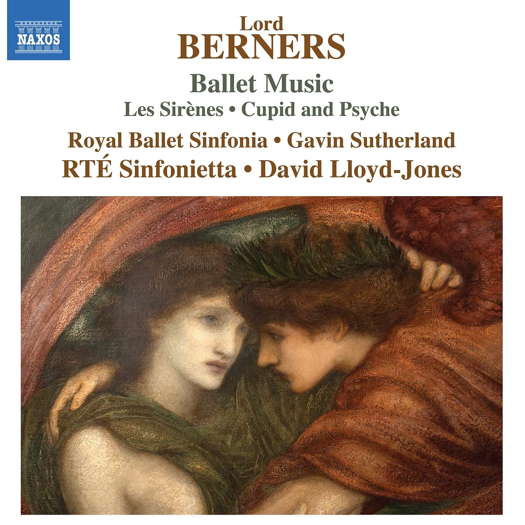
Sir Gerald Hugh Tyrwhitt-Wilson (1883-1950), better known as Lord Berners, was one of the most enigmatic musical figures in the first half of twentieth century England. Despite his impact, Berners' musical output was small by most standards, and the case is often made that if he had to earn a living exclusively from the arts, he would have produced more. Berners' earliest music is the most avant-garde in style, being made up of songs in English, French and German and piano pieces, many of which were published under his original name. In 1924 his only opera, Le Carrosse du Saint-Sacrement, was given in Paris and, two years later, his first ballet, The Triumph of Neptune, was produced by Diaghilev's Ballets Russes.
From now on his music became more accessible but never lost its original flavour and distinctive style. It had shed its avant-garde garb with the orchestral triptych Trois Morceaux, Fantasie espagnole, both performed for the first time in 1919, and the Fugue in C minor of 1924. In fact, his music was deemed accessible enough to be considered for a C B Cochran revue, with the ballet Luna Park in 1930.
The last three ballets were written in collaboration with Frederick Ashton, the famous choreographer, and composer Constant Lambert. The works are A Wedding Bouquet, Les Sirènes and Cupid and Psyche. In February 1946 the Sadlers Wells Ballet took up residence in their new home, the Royal Opera House, Covent Garden. The first new ballet of the season was to be Les Sirènes. It was Ashton's intention to evoke the world of Ouida, using her novel Moths as source material for a ballet. According to Cecil Beaton, while walking by the sea-shore, Ashton stopped to watch the movements of the seagulls, wheeling strange and remote above the beach. He decided to combine Moths with the seagulls, introduce certain characters from the novel, such as the opera-singer and Lady Kitty, gather them together on the beach at Trouville, together with 'La Belle Otero', a Maharaja, a handful of mermaids, the first balloon, and see what came of it.
The plot unfolds over a twelve-hour period from dawn till evening, and is a series of goings-on between these characters and many others, punctuated by a number of entertaining dances. The ballet opens and closes with Sirens sitting on a rock. The work was premiered on 12 November 1946, but it was not a success, mainly because the story was considered as out of touch with the times. Berners' music has lasted somewhat better and shows him very adept at writing dance music, but this has not been enough to push the ballet into the mainstream repertoire.
Listen — Berners: Dénouement (Les Sirènes)
(8.574370 track 11, 0:00-0:57) ℗ 1995 Naxos Rights US Inc :
Cupid and Psyche premiered on 27 April 1939 at Sadler's Wells Theatre. As with A Wedding Bouquet, Berners again devised the ballet's scenario, this time basing it on Apuleius' version of the Greek legend of Cupid's love for the mortal Psyche. However, the costumes and sets were not designed by the composer, but by Sir Francis Rose. As with Les Sirènes, there were elements in the work that showed Ashton and his team as somewhat out of touch with the times. For example, the character of Jupiter is depicted as a goose-stepping Fascist leader giving a Mussolini salute. For the audience at that first night it was too late for such humour. Again, although the first half of the ballet is lyrical, the final scene is treated as a ballet-bouffe mirroring Berners' quasi-Offenbach music. The Daily Telegraph critic declared it to be 'a charming ballet and the audience appreciated it to the full'; other reports suggest it was booed from the gallery. The latter might be more accurate since it ran for just four performances. The suite on this recording follows the plot chronologically and represents some three-quarters of the full score.
Listen — Berners: Les Zéphyrs (Cupid and Psyche)
(8.574370 track 16, 0:00-0:59) ℗ 1995 Naxos Rights US Inc :
The Caprice Peruvien is an orchestral arrangement by Constant Lambert based on melodies from Berners' only opera cited above. When composing Le Carrosse de Saint-Sacrement Berners indulged himself in quasi-Spanish rhythms and melodies, given the South American background of the opera. These particular elements are very much to the fore in Lambert's Caprice, which was put together with the composer's assistance in 1938.
This is beautifully crafted music full of pleasant melodies that one can categorize in the light-music mould, even if the composer is the victim of a certain neglect. These pieces were first issued on the Marco Polo label way back in 1999, but one can still enjoy Lloyd-Jones's impeccable conducting, full of attention to detail, and Berners' deft orchestral touches. His forces respond with warm-hearted performances, brimming with vigorous energy and yet gracefully executed. Sound quality still sounds fresh and breezy, notwithstanding the near-quarter-century that has elapsed since the original recording. Strongly recommended.
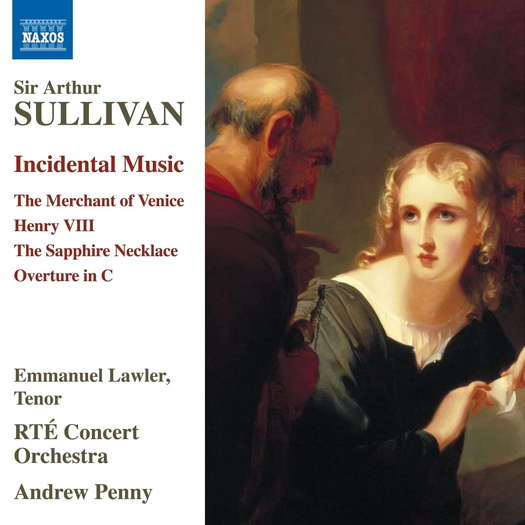
Sir Arthur Sullivan was born in London on 13 May 1842, the son of a military musician. From the outset young Arthur displayed musical acumen that was out of the ordinary, and in 1854 he became a chorister at the Chapel Royal. In 1856 he studied at the Royal Academy of Music and Leipzig Conservatoire after being awarded the First Mendelssohn Scholarship. Returning to England in 1862, he brought with him a suite of music to Shakespeare's The Tempest. The subsequent performance at the Crystal Palace, London, created a sensation, but it did nothing to improve the financial situation of the young composer. Faced with the need to earn a living, Sullivan turned to writing songs and hymns, which in Victorian England were very profitable. He also accepted commissions from theatres for incidental music - such as those recorded here - and from the provincial music festivals for choral and orchestral works. However, much of his pieces have been overshadowed by what today are still known as 'The Savoy Operas'.
Between 1871 and 1896 Sullivan and W S Gilbert collaborated on fourteen operas, such as perennial favourites The Mikado (1885) and The Gondoliers (1889). Many of these works were first produced at the Savoy Theatre in London and hence are still dubbed as 'The Savoy Operas'. The popularity of these stage-works benefitted Sullivan financially, but on the other side of the coin, most of his other works have been scarcely performed since his death, which took place in London on 22 November 1900.
Sullivan's suites for Shakespeare's plays take rank among his most attractive pieces. The Merchant of Venice suite was written for a production at the Prince's Theatre in Manchester on 19 September 1871, and all the music is concentrated on a single scene - a lavish masque during which Jessica and Lorenzo make good their elopement. In 1877 the Theatre Royal, Manchester, was under the management of Charles Calvert, the same person who commissioned Sullivan to compose The Merchant of Venice. Wishing to revive Henry VIII, Calvert again turned to the composer to provide the music. Produced on 29 August 1877, the play and the music were a success, and although Sullivan's creation was confined only to the fifth act, it became extremely popular, especially with brass and military bands.
Listen — Sullivan: King Henry's Song (Henry VIII)
(8.555181 track 8, 0:09-1:03) ℗ 1992 Naxos Rights US Inc :
The opera The Sapphire Necklace, a venture between Sullivan and Henry Chorley, one of the composer's most ardent admirers, was in fact completed in four acts, but never performed. Until 1880, the opera was still in existence, but it has subsequently disappeared. The overture was published in a military band arrangement by Charles Godfrey Jr, however no orchestral material for the overture is known to survive. For the purpose of this recording Roderick Spencer has prepared an orchestral version in Sullivan's style.
When the composer was approached by the Norwich Festival to write a piece for the occasion he was short on inspiration and wanted to abandon the project. But his father urged him to be patient as something would crop up to provide the necessary impetus. Sadly for Sullivan, that impetus was the sudden death of his father in September 1866. As an outlet for his grief, Sullivan began to revise and shape what he had done, and within a short time the Overture in C 'In Memoriam' was completed. The composer responds to the death with a sincerely musical approach typical of its age. Besides having serious moments, the work has a sense of thanksgiving and joy that are communicated to the listener with immense fidelity.
Listen — Sullivan: Overture in C. In Memoriam
(8.555181 track 13, 6:01-6:58) ℗ 1992 Naxos Rights US Inc :
This is beautifully crafted music full of attractive tunes, colourful, atmospheric and often harmonically vibrant. Andrew Penny marshalls his orchestra with aplomb, and the response is as sparkling and brilliant as one would expect. Recorded in April 1992 by the 'Marco Polo' label, this re-release is more than welcome, if only to remind us that Sullivan's music world extends well beyond the Savoy confines. Excellent sound quality and helpful essays are further bonuses.
Copyright © 15 May 2022
Gerald Fenech,
Gzira, Malta

CD INFORMATION - ROBERT DOCKER: THREE CONTRASTS (8.574322)
CD INFORMATION - FREDERIC CURZON: ROBIN HOOD SUITE (8.555172)
CD INFORMATION - LORD BERNERS: BALLET MUSIC (8.574370)
CD INFORMATION - SULLIVAN: INCIDENTAL MUSIC (8.555181)


